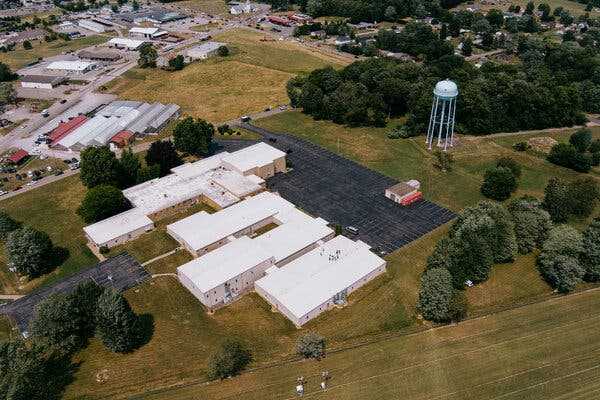A report obtained by The Times detailed the bombs’ rudimentary construction, made with the kind of initiators used for fireworks shows.
- Share full article

An aerial view of the complex of buildings from which a gunman fired at former President Donald J. Trump in Butler, Pa., on Saturday.
Following the killing of gunman who tried to assassinate former President Donald J. Trump on Saturday during a rally in Butler, Pa., investigators discovered two improvised explosive devices in the would-be assassin’s car that used a radio-controlled initiation system designed for commercial fireworks demonstrations.
Details on the improvised bombs were in a document released by a federal government task force on Monday to law enforcement departments across the country.
The New York Times obtained a copy of the document, called a “quick look” report, on Tuesday.
The two devices in the car owned by Thomas Matthew Crooks, 20, of Bethel Park, Pa., were almost identical in construction, according to the task force’s report. Each contained a cardboard tube filled with a gray powder that was described by a police bomb technician as having “an odor of nitromethane” and appeared to contain prills — essentially small pellets.
While the report does not contain a laboratory analysis of the gray powder, the description suggests the presence of a fertilizer, which are often packaged in prill form. According to the National Institute for Health, nitromethane is sometimes used as a fuel in racecars and has a “strong disagreeable odor.” It can be purchased online.
The combination of certain kinds of fertilizers and fuels is a common method for creating homemade explosives, such as the ammonium nitrate-based device Timothy J. McVeigh used to destroy the Alfred P. Murrah Building in Oklahoma City, Okla., in 1995, killing 168 people.
Whether or not Mr. Crooks attempted to detonate the devices is unclear, but the report described them in a manner that cast doubt on their viability as weapons.
We are having trouble retrieving the article content.
Please enable JavaScript in your browser settings.
Thank you for your patience while we verify access. If you are in Reader mode please exit and log into your Times account, or subscribe for all of The Times.
Thank you for your patience while we verify access.
Already a subscriber? Log in.
Want all of The Times? Subscribe.
SKIP ADVERTISEMENT
Source: nytimes.com



